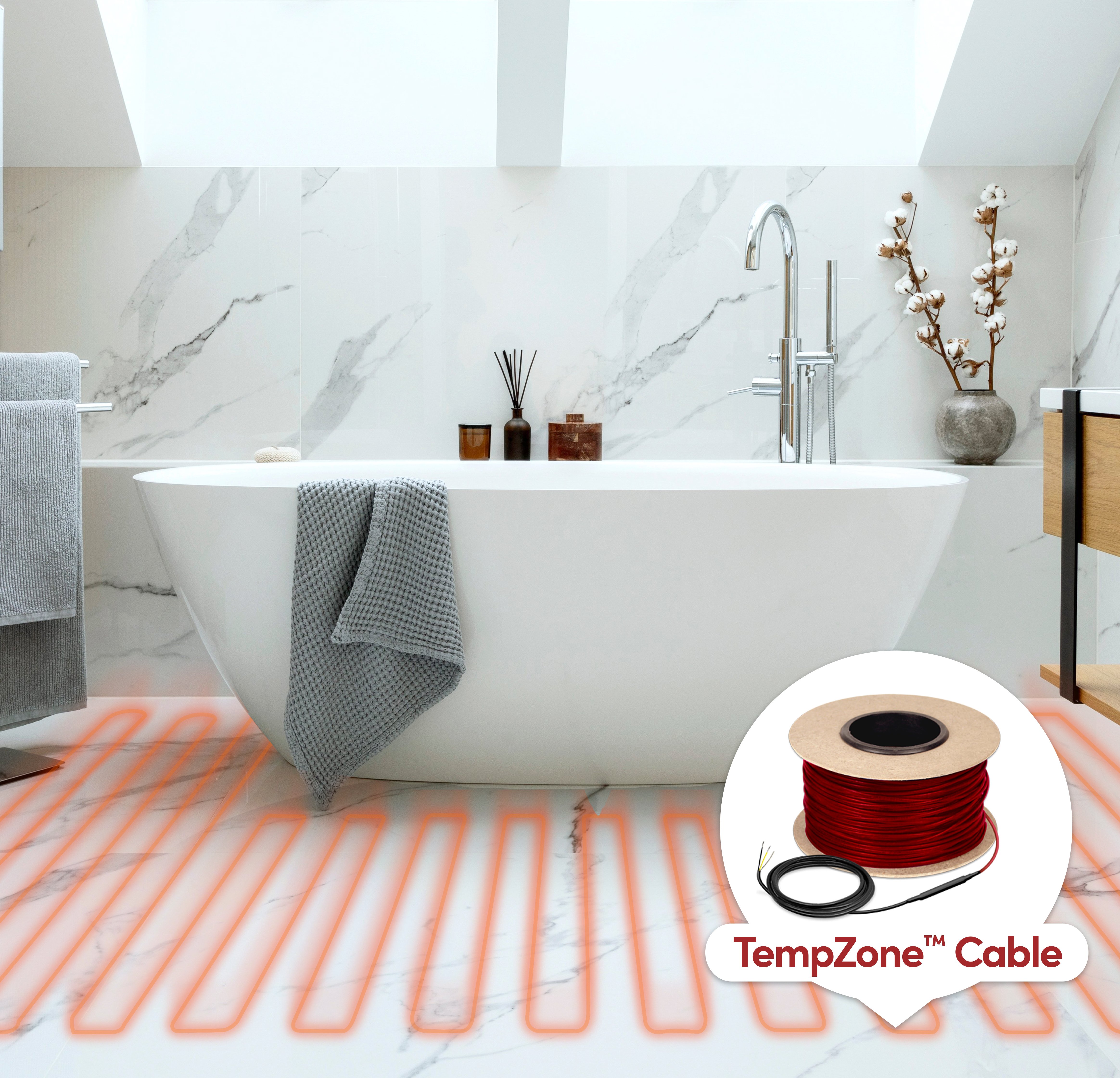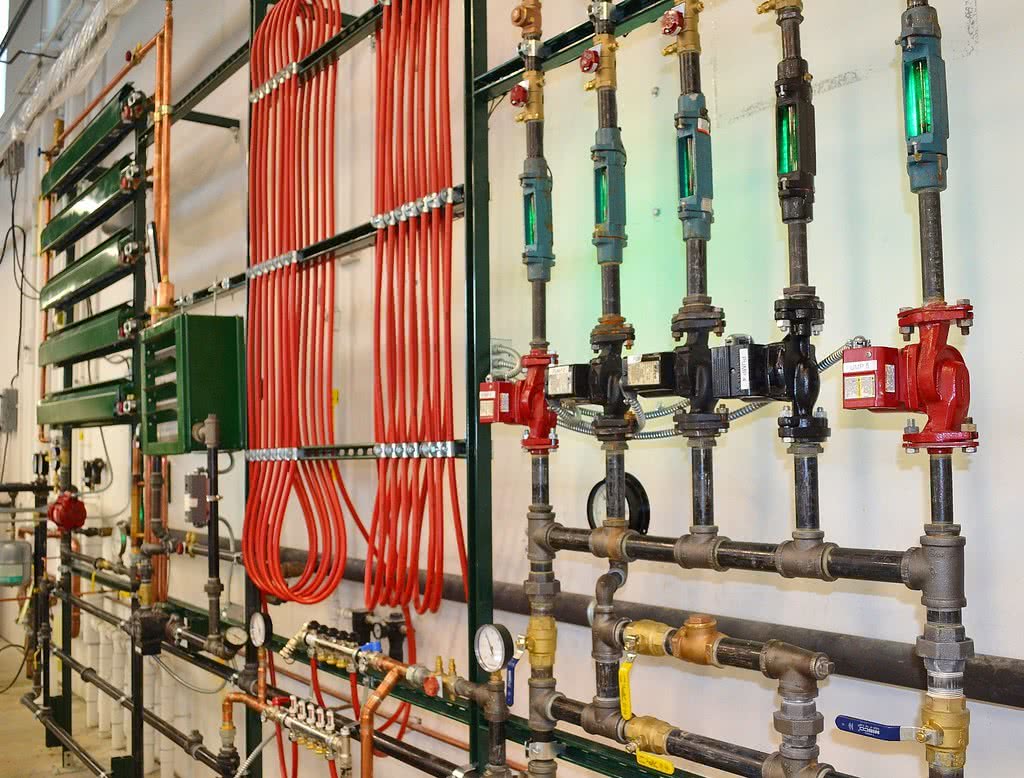Electric vs. Hydronic Radiant Floor Heating: Which is Right for You?
published on november 3, 2017

In This Article
What’s the Best Type of Radiant Floor Heating for Your Home?
Radiant floor heating is one of the most comfortable and energy-efficient ways to warm a space—delivering heat from the ground up for even, consistent warmth. But did you know there are two main types of systems to choose from?
You can opt for electric floor heating, which uses heating cables installed beneath the floor, or hydronic heating, which circulates hot water through tubing. While both systems achieve the same cozy outcome, they operate differently and vary in cost, installation, and ideal use cases.
In this guide, we’ll break down the pros, cons, and best-use scenarios for each type of radiant floor heating system—so you can confidently choose the right solution for your home or project.
Why Choose Electric Floor Heating?
Why More Homeowners Are Choosing Electric Floor Heating
When it comes to combining comfort, efficiency, and flexibility, electric floor heating stands out as a smart solution for a wide range of projects. Whether you’re upgrading a bathroom, finishing a basement, or building a new home, electric radiant heat offers a low-profile, high-performance option that works seamlessly with your lifestyle.

Electric floor-heating systems are known for their versatility and ease of use, making them a popular choice for both new construction and remodeling projects. Whether installed by a professional or an experienced DIYer, these systems provide reliable, radiant comfort.
Electric floor heating can provide primary heat in well-insulated spaces or act as supplemental warmth in colder rooms, all while operating quietly and efficiently beneath your floors. With compatibility for existing circuits in smaller areas, they’re a perfect fit for renovations and remodels alike.
Built for Convenience and Comfort
WarmlyYours electric floor-heating systems are designed with homeowner convenience in mind:
Low Maintenance: Once installed, these systems are virtually maintenance-free. If a problem does arise, WarmlyYours’ expert support team can help troubleshoot. And if a break in the cable occurs, it can be located and repaired without removing the entire floor — just the affected area.
Ultra Thin Design: Our heating cables are only 1/8” thick, meaning they raise the floor height by a minimal amount. This helps maintain even transitions between rooms.
Energy Efficiency: When paired with programmable or Wi-Fi thermostats, electric systems can be turned off when not in use and reheated quickly (typically in 30–60 minutes), reducing energy waste and costs.
Cost-Effective for Small Spaces: With system costs ranging from $10–$20 per square foot, electric floor heating is an affordable luxury for bathrooms, kitchens, or any targeted area.
Pros
- Easy to install (DIY and Pro-friendly)
- Provides primary or supplemental heat
- Ideal for remodeling projects
- Virtually maintenance free
- Ultra-thin—minimal floor elevation
- Affordable to install
- Energy efficient with Smart Floor Heat Thermostats
Cons
- Operating cost vary based on electrical rate and usage
- Not recommended for whole-house heating in areas with high electrical rates
- Larger installations may require new circuit wiring
Things to Consider
While electric floor heating has many advantages, it may not be the perfect fit for every situation:
Operational Cost: In regions with high electricity rates, running the system constantly—especially in large spaces—can be expensive. That’s why it’s best suited for targeted heating rather than whole-house applications.
Electrical Load: For larger rooms or whole-home systems, you may need a dedicated circuit added by a licensed electrician. Smaller rooms, like bathrooms, can often connect to an existing one.
Want to estimate how much it would cost to run a system in your space? Use the WarmlyYours Operating Cost Calculator.
Why Choose Hydronic Floor Heating
Hydronic Floor Heating: Best for Whole-Home Warmth, But Less Ideal for Remodels
Unlike electric systems, hydronic floor heating is well-suited for whole-house applications—making it a great fit for new construction. However, it’s not ideal for remodeling projects due to the complexity of installation. Hydronic systems require a boiler, pump, and gas lines, which are easier to incorporate during initial construction rather than retrofitting into an existing home. If your home doesn’t already have a boiler, the upfront cost can be substantial.

That said, hydronic systems can be more cost-effective over time—especially in larger homes. As more square footage is added, the cost per square foot decreases because multiple rooms can share the same heating infrastructure (like the boiler and pump), spreading out the investment and reducing long-term operating costs.
However, one significant downside is maintenance and repair difficulty. If a leak or issue occurs, it’s often hard to pinpoint the exact location. Unlike electric systems—where repairs can be localized—hydronic leaks usually require removing sections of flooring to access and repair the tubin
Additionally, hydronic systems typically have a slower response time compared to electric radiant floor heating. Because it can take hours for a hydronic system to fully warm up, many homeowners choose to run them continuously throughout the heating season. This makes it difficult to use programmable schedules or smart thermostats effectively, which can lead to higher overall energy usage, even if the system has a lower per-hour operating cost. In contrast, electric floor heating systems heat up quickly, offering on-demand comfort and greater control over energy consumption.
Pros
- Ideal for whole-house heating or large area heating
- Works well as a primary or supplemental heat source
- Lower operating cost over time in some regions (especially with gas)
Cons
- High upfront installation costs (especially in existing homes)
- Less suited for remodeling or space space applications
- Slower heat-up time reduces scheduling efficiency
- Requires regular maintenance (e.g., boilers, pumps, risk of leaks)
- Energy usage may increase due to constant operations
Electric vs. Hydronic Radiant Floor Heating: Side-by-Side Comparison
| Feature | Electric Radiant Floor Heating | Hydronic Radiant Floor Heating |
|---|---|---|
| Heating Method | Electric cables or mats | Hot water through tubing |
| Best For | Small areas, remodels, bathrooms | Whole-house, new construction |
| Heat-Up Time | Fast (30–60 minutes) | Slow (can take hours) |
| Installation Cost | Lower | Higher |
| Operating Cost | Moderate | Low (especially with gas) |
| Ease of Installation | Easy, especially with mats | Complex – requires boiler & plumbing |
| Maintenance Needs | Minimal | Moderate to High |
| Energy Efficiency | High (especially with zoning) | Lower (due to constant use) |
| Space Requirements | None (underfloor only) | Requires space for boiler, manifolds |
| Control & Scheduling | Excellent (Wi-Fi thermostats, timers) | Limited (not ideal for on/off schedules) |
| Ideal for Remodels | Yes | No |
| Zoning Flexibility | Very flexible (room-by-room) | Less flexible (central control) |
Best For: Choosing the Right Radiant Heating System
Electric Radiant Floor Heating is Best For:
Bathroom, kitchen, or basement remodels
Spot-heating individual rooms
Homeowners seeking easy installation and smart control options
Projects where fast heat-up and minimal floor height impact are priorities
Spaces where design flexibility and silent operation matter
Hydronic Radiant Floor Heating is Best For:
Whole-home heating in new construction
Larger spaces with consistent, long-term heating needs
Homes with access to efficient natural gas systems
Situations where operating cost is a long-term consideration over installation convenience
Projects where a centralized heating system is desired
Ready to Warm Up Your Space?
Whether you’re building from the ground up or updating a single room, WarmlyYours has the right floor heating system for your needs.
- Use our Product Finder Tool to explore your options
- Or send us your floor plan get a free custom layout and quote
Have questions? Our radiant heating experts are just a call, text or chat away — we’re here to help you every step of the way.
For more information about electric floor heat, visit www.warmlyyours.com.
Have Questions About Your Project?
Our team of Radiant Experts is ready to help!
Stay Updated
Get the latest radiant heating news and tips delivered to your inbox.



